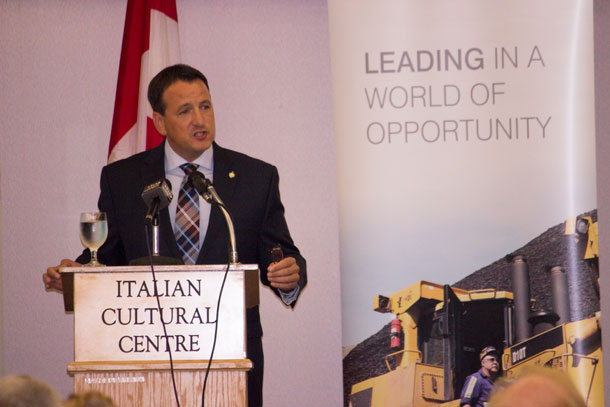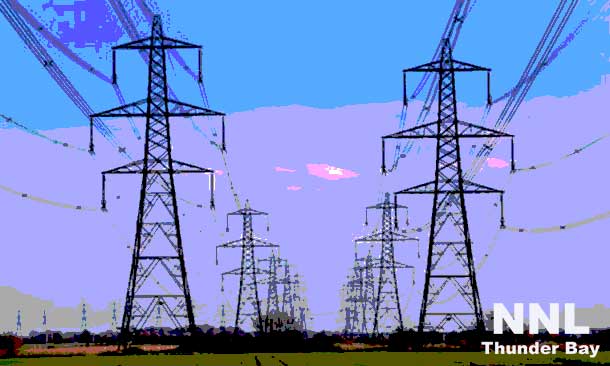
THUNDER BAY – BUSINESS – “North America is a secure, responsible and reliable producer and supplier of energy,” states Minister Greg Rickford. “We have deeply integrated economies, abundant reserves, shared critical energy infrastructure, and common values that underpin our strong collaboration”.
“We must enhance our trilateral energy collaboration in a way that supports North American energy security, jobs and environmental protection. Indeed, we have already achieved much progress in this regard, and I look forward to building on our successes through developing a strategic, fact-based approach in these three areas,” adds Minister Rickford, the Member of Parliament for Kenora, and Canada’s Minister of Natural Resources.
Rickford is headed to Washington DC in his third official visit to the United States as Natural Resources Minister on Monday, December 15th. This visit represents his fourth official meeting with Dr. Ernest Moniz, United States Secretary of Energy, and first official meeting with Pedro Joaquin Coldwell, Mexican Secretary of Energy.
The meeting comes as oil prices continue a downward spiral. The International Energy Agency states, “Oil price drops are sometimes described as a ‘tax cut’ and a boon for the economy, but this time round their stimulus effect may be modest.” The IEA Oil Market Report (OMR) for December cut the outlook for 2015 global oil demand growth by 230 000 barrels per day (230 kb/d) to 0.9 million barrels per day (mb/d) on lower expectations for the Former Soviet Union and other oil‐exporting countries.
This meeting of North American Energy Ministers will further define our trilateral priority of enhancing North American security and energy cooperation, and address a strategic vision for the North American energy community. Specifically, trilateral discussions will highlight three important areas:
- North America data collaboration: improving information on North American energy flows and the quality, timeliness and transparency of energy data and developing continental maps of energy infrastructure;
- Building modern and resilient energy infrastructure for North America (pipeline, marine, rail); and
- Examining Mexico’s energy reforms, its implications for the North American energy sector and enhancing business opportunities for North American energy development.
Mexico recently enacted national energy reforms and, in this context, will contribute enormously to the trilateral conversation. Minister Rickford and Secretary Moniz recently enhanced bilateral cooperation in 11 areas by signing a Memorandum of Understanding on Canada–U.S. Energy Cooperation in Ottawa on September 18, 2014.
In October, the Department of Energy issued a Presidential Permit for a transmission line from Quebec to Queens, New York, that could supply up to 1,000 megawatts of clean, secure electricity to the United States. Minister Rickford and Secretary Moniz also co-hosted a consultation in Ottawa contributing to the United States’ Quadrennial Energy Review — the only session of its kind outside the United States.
During his visit, Minister Rickford will also highlight the benefits of the Keystone XL pipeline — a responsibility that falls under the purview of the U.S. Secretary of State.
Quick Facts
- Canada benefits from one of the cleanest electricity mixes in the world, with 65% generated from renewable sources — the highest level in the G7.
- Canada is the world’s third-largest producer of electricity, has the third-largest proven oil reserves (after Venezuela and Saudi Arabia), second-largest reserves of uranium, fifth-largest natural gas production and ninth-highest installed wind capacity.
- There are already 70 pipelines delivering oil and gas across the Canada–U.S. border every day —safely and reliably.
- Between 2005 and 2012, Canada’s economy has increased while Canada’s greenhouse gas emissions have decreased. Canada’s per capita GHG emissions are now at their lowest level since tracking began.
- Canada’s overall tax rate on new business investment is now the lowest in the G7, 13% lower than the OECD average.
- Between 2005 and 2013, Canada’s crude exports increased by 64%, while dependence on foreign crude has decreased by 31%.
- Both the U.S. and Canada have dramatically reduced oil imports, while our oil imports from each other are at record highs.
- According to the U.S. EIA, since August 2014, monthly Canadian crude oil exports are now over 3 million barrels per day and exceed all OPEC’s daily exports to the U.S.






